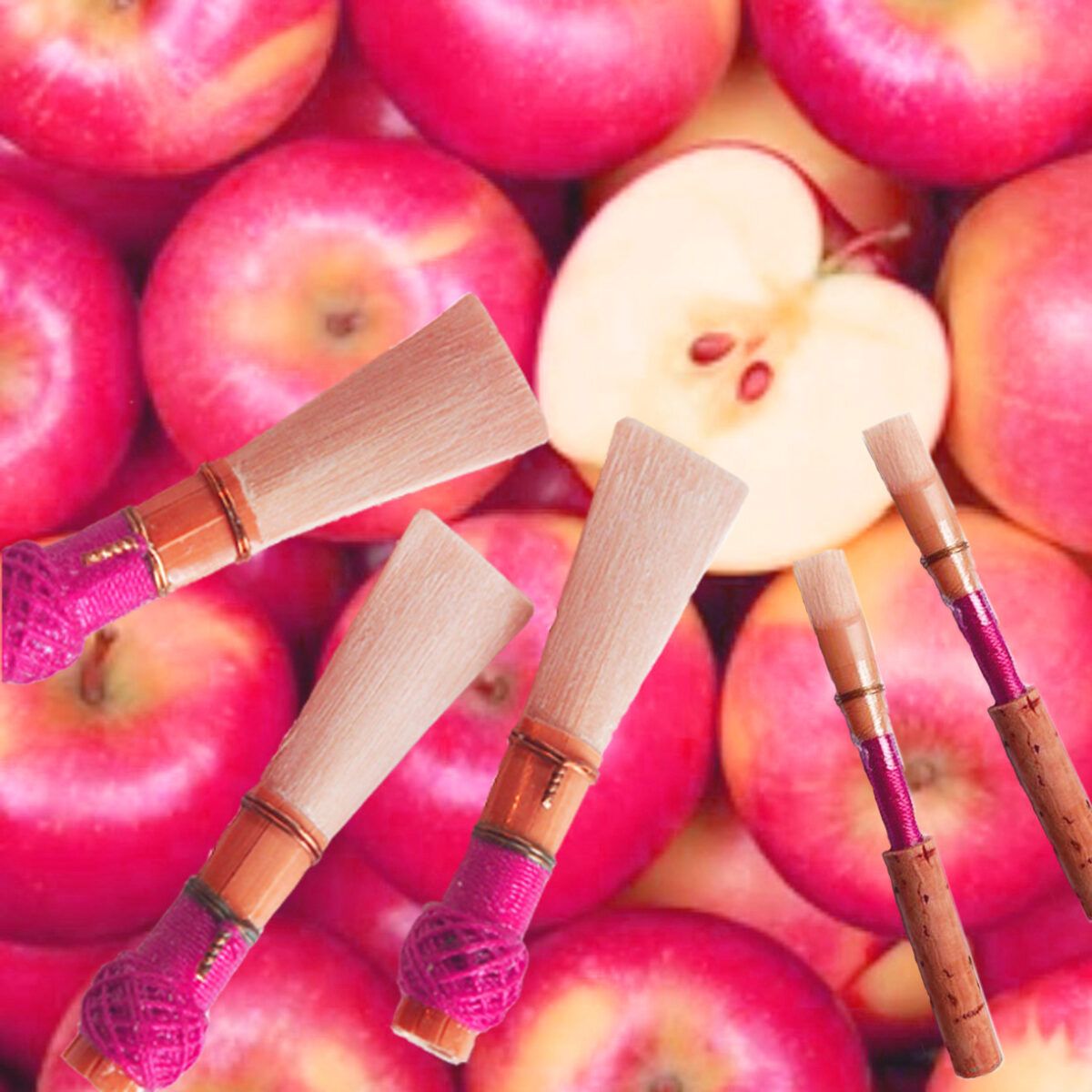Why Reeds are like Apples! The difference between Cane Density and Reed Strength
Cane density is a different concept to reed strength! You may not be aware of it, but both cane density and reed strength play a part in the reed you will enjoy playing on.
What is Cane density?
Cane density refers to how the reed feels to play. If the cane used is quite dense, it feels harder for the player to push air against.
Although you don’t bite into your reeds, the density of the cane is analogous to eating apples. A reed with dense cane is like biting into a crisp apple, a reed with less dense cane is more like a floury apple. The difference in cane density is the reed’s resistance and what it feels like to blow against.
Is Cane Density different to Reed Strength?
Yes, cane density is different to the reed strength.
Reed strength is categorised by words such as Soft, Medium Soft, Medium, Medium Hard and Hard. For most reeds you select your preferred strength by choosing from the above options on the listing when purchasing.
Strength refers to the thickness of the cane, and its largely influenced by the reed maker, who can scrape the cane thinner or leave it thicker as desired. Basically if the reed is thinner its easier to get the cane vibrating, when thicker it is harder to blow against.
Taking the apple analogy, strength is like taking your crisp or floury apple and slicing it into thick or thin slices. The floury or crisp texture of the apples flesh is like cane resistance. The thickness of the apple slices is like the reeds strength. It’s possible to have a lighter or harder density of cane in a softer or harder strength (eg a reed with a hard cane density in soft strength).
The advantages and disadvantages of less resistant cane / lower cane density:
Some players say that a less resistant cane feels ‘soggy’ in the mouth and the tone sags. Notes may ‘fly’ which means that the player is having trouble keeping the intonation of some notes stable. Another thing players’ say is that a note might “sag” indicating the intonation on a note is flat especially compared to the notes around it, this can be the case for a less resistant reed or one that isn’t adjusted correctly for your instrument or playing characteristics.
Other players prefer a less resistant cane, as it can be much easier to play, easier to control, easier to start notes and to maintain the stamina needed to play for a length of time. Generally beginners and those coming back to playing after a break, find less resistant cane preferable. Some experienced players choose less resistant cane because it gives them the flexibility to create different dynamic contrasts or more expressive tone colours.
Advantages and disadvantages of resistant cane / harder cane density:
Resistant cane can be harder to push air through and this can be tiring for the player. It’s often harder to start the reed vibrating, so starting notes at the beginning of a phrase can be difficult and it can require more stamina to articulate fast passages. However, many players like the quality of the tone made on resistant cane. They find the sound generally warmer or darker on a reed made from harder density cane, which is an advantage for playing solo pieces. Tuning may be more stable depending on the instrument and player and articulation is often crisper and faster. Reeds made with more resistant cane also tend to last longer.
If you’re unsure what kind of reed you will require, our recommendation is to start with a reed (pick a reed, any reed!) and work from there. If it doesn’t work for you, move harder or softer as needed until you settle on something that helps you play at your best!
You may find some pieces demand a softer or harder reed depending on the playing requirements of the music. So don’t worry if a reed you’ve purchased doesn’t suit you today, hold onto it, as it may be the ideal reed for a future piece.
Contact us if you’d like further information on enquiries@sweetreeds.com or 0438 658 889. Music Teachers, fellow musicians, internet forums and reed making books will also be a great source of information.


